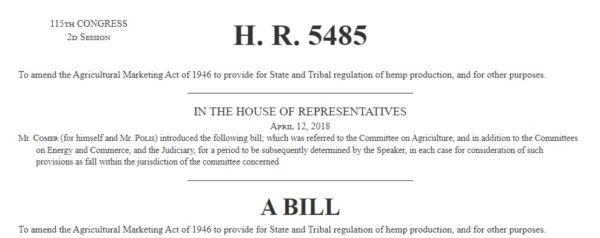The short answer: 'hemp' is a federally legal variety of cannabis that does not get you high.
Hemp is a variety of the plant Cannabis sativa. There are many varieties of cannabis, and they can have very different attributes. “Industrial” hemp plants can be short and bushy or very tall. They can be very fibrous and used for clothing, rope, and even construction material (‘hempcrete’) and they can be bred for edible seeds.
Cannabis is also bred for cannabinoid content. Cannabinoids and their effects are described and discussed in another post. For the purpose of this discussion, it’s important to know that the cannabinoids CBD and THC have documented effects on the human brain and body, but THC is known as the primary compound that induces an intoxicating or ‘high’ effect.

The US Congress 2018 Farm Bill authorized the production of hemp and removed hemp and hemp seeds from the Drug Enforcement Administration’s (DEA) schedule of Controlled Substances. It defined the term ‘hemp’ and states that hemp and products derived from hemp (such as CBD products) can be legally sold if they contain less than 0.3% THC.
0.3% is a very small percentage and highly unlikely to have noticeable effects when using normal quantities of hemp derived products.
Unfortunately, if a cannabis plant contains 0.31% THC it is no longer considered ‘hemp’ and is instead a Schedule 1 controlled substance and (federally) illegal to cultivate or sell and subject to significant penalties and restrictions.
An additional 0.01% will have no meaningful difference in effect. Yet it is a razor thin margin between legal and illegal and the source of much consternation from farmers and product manufacturers.
0.3% is a very small percentage and highly unlikely to have noticeable effects when using normal quantities of hemp derived products.
Unfortunately, if a cannabis plant contains 0.31% THC it is no longer considered ‘hemp’ and is instead a Schedule 1 controlled substance and (federally) illegal to cultivate or sell and subject to significant penalties and restrictions.
An additional 0.01% will have no meaningful difference in effect. Yet it is a razor thin margin between legal and illegal and the source of much consternation from farmers and product manufacturers.

